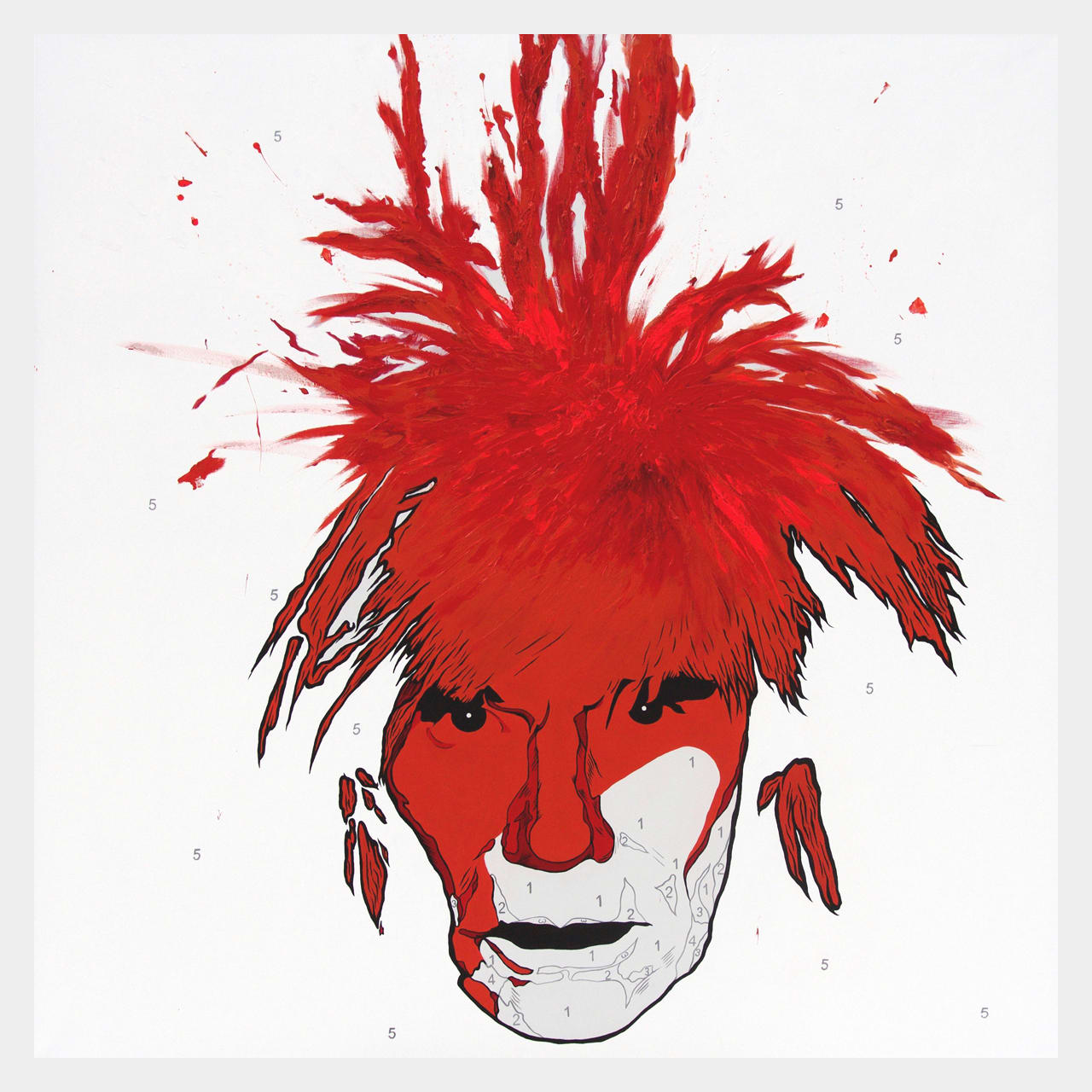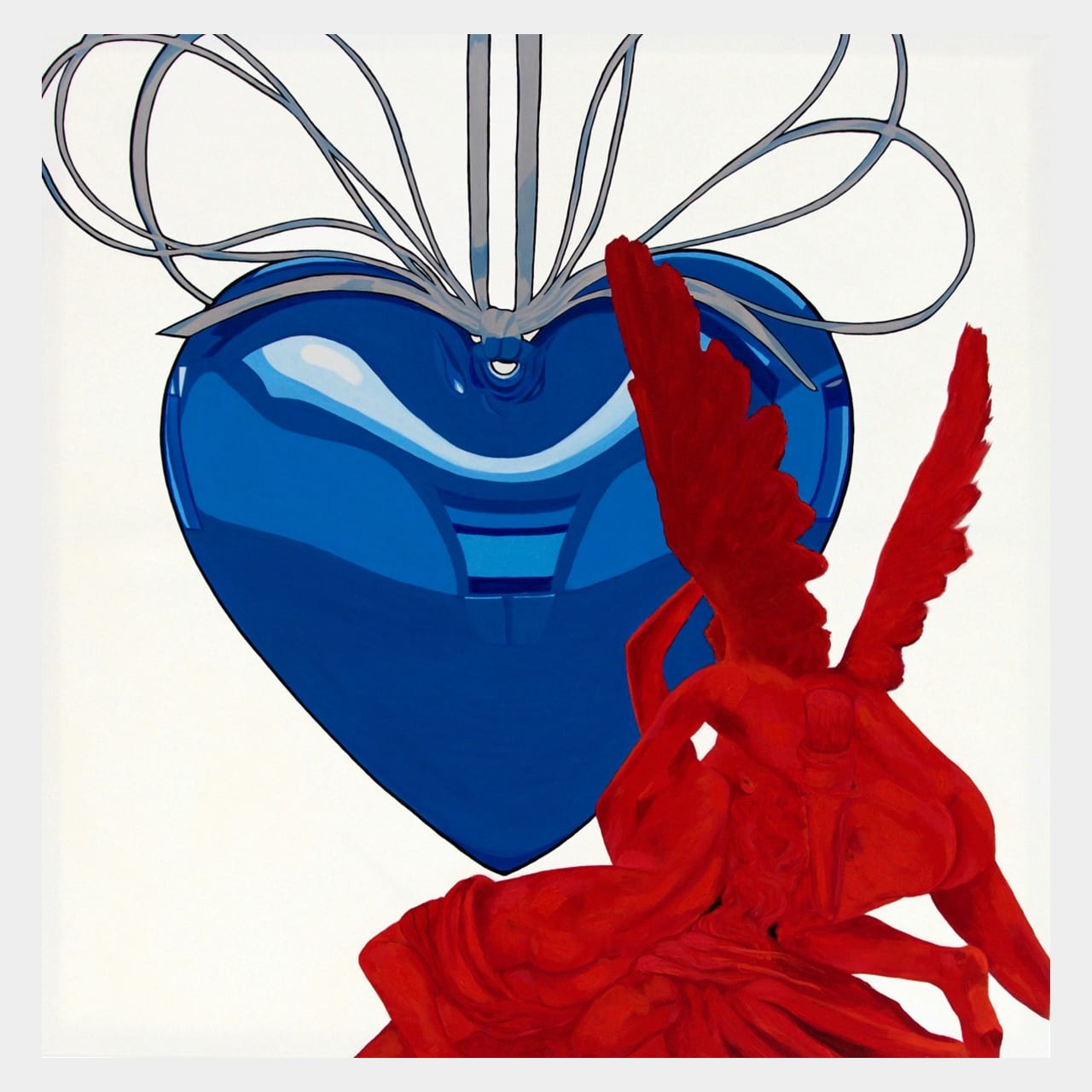There's No Place Like Home
Solo exhibition 2017, Galerie Leu, Munich, Germany
If we do not want to reduce A.M.’s ironic fantasizing to pure images, we may ask: what does it teach one to see? And, what exercise does AM perform through it?
The first question directs the spectator’s attention to this mode of fantasizing – this process of seeing and thinking – and to the place of fantasy in our present-day world – here emerges a model of man governed by imagination. The second question opens A.M.’s work to an ethical dimension – to the relation each one bears to oneself – and a political dimension – the relations one has with others. This act of fantasizing is an exercise in liberation, understood as ironic lightness, through painting.
A. M. is not a mentor (one who shapes our fantasizing), nor a social scientist (one who takes fantasizing as a subject matter). A. M. is a painter. There is no redundancy in stating it only because it entails to understand a certain visual practice of fantasy. There is a kind of knowledge by acquaintance here: A.M. is a practitioner, a fantasist. But his fantasizing is inseparable from an external activity, i.e., it is exercised through a visual medium which is the medium of painting. Thus, fantasizing appears as a visual game whose “rules” are exhibited in this painting.
Fantasizing is a way of imagining which is independent from reality, and models of realism, and such independence sustains its own “freedom” (E. Souriau). A. M. exhibits a fantasizing process – an activity – which begins and ends with images. However, there would be little advantage in subsuming A.M.’s ironic fantasizing under the category of simulacrum-images (G. Deleuze). For, in fact, fantasizing is distinct from Burroughs’ dreaming and Musil’s envisioning (to mention just a few – artistically remarkable – forms of being governed by imagination). A brief comparison with some of William Burroughs’ visual works enables us to note some differences. Both identify freedom with an aerial imaginary of lightness. Yet, while Burroughs intends to rarefy his obsessions, cutting the relations that make up an image (e.g. with and in the pornographic image), A.M. lightens (humorously) the imagetic charge, establishing new (ironic) relations. Burroughs operates as a (de)programmer, A.M. as a (meta)editor of images. We believe that in our present-day world the logic of fantasy, and its heteronomies, have become constant.
The ironic fantasizing we exercise here presents a play in the use of images and the creation of (ironic) relations between them: a play of (re)creation of relations between what one sees, it’s meaning and the way one feels. But A.M. shows this free play to be rule-governed.
The first, fundamental, rule, is that of selecting images or “referents” that may be transfigured into charge-images: images that attract and seduce in virtue of their emotive, imaginary and symbolic capital. (Note, from this point of view, the choice of converting sculptures into pop visual signs.) In the encounter with these images – as it often happens with appropriations – we seek that which is familiar to us. Recognizing becomes here a key operation to activate imagetic charges. The second rule is to create parallels. First, a parallel with the “series” of childhood images and the “series” of art images, and plastically between the visual language of pop and “expressionist” gestures. “Works of art”, objects and images from childhood were translated into icons and pop symbols. As such, these childhood images select in a privileged way a group of spectators who have at their disposal a certain cultural capital (Bourdieu). A knowledge which is also necessary to play the irony game (of meaning) proposed. So, the parallel creates some cyphers, visual (what are we really seeing in those compositions?) and semantic (what does each composition mean?). Ironic fantasizing is not consummated in pure visibility: connoted meanings – meanings or narratives – are a third element, irreducible to the visual parallel.
fantasizing rivals with realistic models of the image and with reality itself, and, as we have suggested, maybe the model-man of present-day societies is governed by imagination. Thus, fantasies (political, sexual or others) become a central fighting ground: a ground of production, circulation and consumption but also of resistance.
Fernando Poeiras
PhD, Professor of Art and Design at ESAD, CR Portugal.










